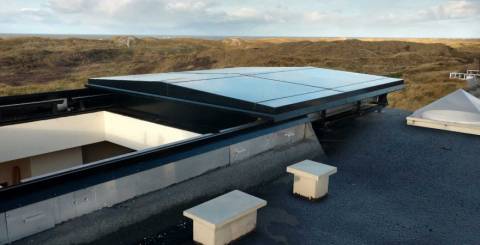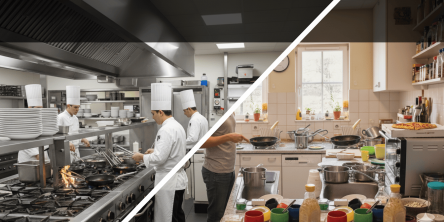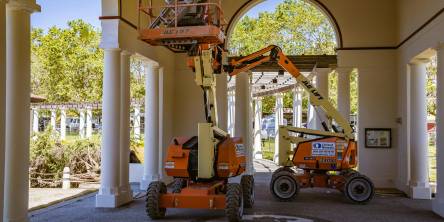The Hatch That Slides: How Roofs Open Up When Space Runs Out

In big buildings where every inch matters, solving space problems isn’t always about making things smaller. Sometimes, it’s about designing smarter. One solution that’s quietly helping architects and engineers do just that is the sliding roof hatch.
These clever systems don’t always get the spotlight, but they play a huge role in making buildings safer, more useful, and easier to manage—especially in tight or high-use areas. Whether it’s a busy rooftop, a plant room packed with equipment, or a commercial space that can’t afford bulky doors swinging open, sliding hatches are built to handle it all.
Why Normal Roof Access Isn’t Always Enough
Most buildings with rooftops need some kind of access, either for maintenance or moving things in and out. That’s where roof hatches come in. Some open on a hinge, flipping upward, while others pop straight up. These types are fine in a lot of cases, but they take up vertical space when they open, and that can be a problem.
Think about a flat roof with solar panels, AC units, or ductwork right next to the entry point. A standard hatch might bump into those or just be plain hard to use. That’s where sliding hatches really help—they move sideways instead of up, staying out of the way while still offering a full opening.
In areas where there isn’t much room to work with, sliding designs make access smoother and safer.
How Sliding Hatches Actually Work
Sliding hatches do exactly what the name says—they slide open instead of lifting. The cover moves along tracks, usually to one side, revealing the opening underneath. Some are operated manually, while others use electric motors or hydraulic systems for larger or heavier covers.
They’re built to deal with weather, foot traffic, and even high wind pressure. Many are insulated to stop heat loss and prevent leaks. Others come with guardrails or ladder access built right in, making it easier to meet safety codes.
For projects where rooftop space is packed or heavily used, you can view Surespan's sliding hatches—they’re designed for commercial use and come in a bunch of sizes, materials, and configurations depending on what’s needed.
Where Sliding Roof Hatches Make the Biggest Difference
These aren’t features that show up everywhere, but when they’re needed, they really matter. Here are some of the places where sliding hatches are most helpful:
- Mechanical and plant rooms: These areas often have large machines or units that need to be swapped out from above. A sliding hatch gives a wide, clear opening without needing space above to lift the lid.
- High-traffic rooftops: When a roof is used for more than just storage—maybe as a workspace or even a green roof—there’s less tolerance for doors or covers that swing open into walkways.
- Limited vertical clearance: Some buildings have equipment or beams overhead that make hinged hatches impossible. A sliding option avoids those height problems.
- Heavy-duty projects: When the roof opening needs to be huge or used regularly for big deliveries, manual or powered sliding covers handle the job more easily than awkward lift-up types.
Safety, Speed, and Simplicity
One of the biggest reasons for choosing sliding hatches is safety. Since they don’t rise above the roof line, they’re less likely to blow shut in high wind or knock into people or gear. Some even include soft-start motors or auto-locking systems to make them smoother and more secure.
Plus, opening a heavy lid manually can be tough and risky. A sliding system, especially if powered, can be easier to use for more people and reduce injury risks.
Sliding hatches also speed things up. For example, in a manufacturing facility where parts need to be lifted in and out often, having a hatch that opens fast and without manual effort keeps everything moving without delays.
Design That Doesn’t Get in the Way
Sliding roof hatches are also a quiet win when it comes to design. Since they don’t swing out, they don’t take over the space around them. That means architects can keep clean lines on the roof, avoid interfering with nearby equipment, and make better use of the area.
The hatch itself can be made from different materials to match the building’s needs—aluminum for lighter use, stainless steel for industrial settings, or fully insulated panels for energy efficiency.
Even the way the hatch slides can be adjusted. Some move to one side, others split in the middle, and a few even retract completely for a full, open-air space.
Built to Last
Because these hatches are used in commercial and industrial spaces, they’re built tough. Many are designed to meet strict safety standards and can handle regular use without wearing down.
Good sliding hatches are also weatherproof and tested against wind, rain, and snow loads. That way, they can stay shut tight when they’re not in use, keeping the inside of the building protected.
Regular maintenance is pretty simple too. As long as the tracks are kept clear and moving parts are checked once in a while, a quality system can last for years without major repairs.
Why They’re Not Just for Big Projects
While a lot of sliding hatches are used in large-scale construction or industrial projects, they’re starting to show up more in smaller buildings too. Architects working on multi-use spaces or tight rooftop plans are looking for options that don’t get in the way but still meet all the codes.
As buildings get smarter and more crowded with tech—solar panels, HVAC systems, roof gardens—having a better way to get in and out without causing problems is becoming more important.
Sliding hatches don’t shout for attention, but they solve real problems in a simple, effective way.
What to Remember
Sliding roof hatches might not be something most people think about, but they’re a key part of smart building design. When space is limited or safety matters most, these systems open things up without taking more room or creating new problems.
They work smoothly, stay out of the way, and make life easier for everyone who needs to get in, out, or move heavy equipment. Whether it’s for a huge rooftop or a tight mechanical room, sliding hatches offer a solid solution when traditional access just doesn’t fit.
For any commercial project where roof access matters, it’s worth checking how sliding hatches can make things better without getting in the way.
Similar Articles
Anyone who's worked in a commercial kitchen knows they operate with an efficiency that home kitchens rarely match.
When you want to transform your home with a complete makeover, you must find the best ways to save money. Let's check some cost-saving tips for renovating.
Handrails are one of the few things that merge safety, fashion, and structural importance in a home most naturally when the home is being either designed or renovated.
Cabinets play a vital role in any home, combining function, organization, and aesthetic appeal. Whether in the kitchen, bathroom, or living area, cabinetry defines the layout, storage capacity, and overall look of a space.
Every homeowner eventually faces the question: Should I repair or replace my roof entirely? It’s not always an easy decision.
Accessing elevated heights is a common requirement in various industries, including construction, maintenance, warehousing, and event setup. However, safely reaching these high areas can present challenges.
When the holiday season approaches, one of the most beloved traditions is decorating homes with twinkling outdoor Christmas lights. However, many homeowners hesitate before pulling out their light strands, worried about potential damage to their property.
Each and every season, houses and streets are illuminated with glittering celebratory joy. You may be simply attaching a few strands of plain, white lights, or creating a multi-colored, colorful masterpiece, but one of the most significant details is the hardware that holds those lights firmly in place
Backyards are not simply the open spaces but they are the extensions of our homes where memories are made.









